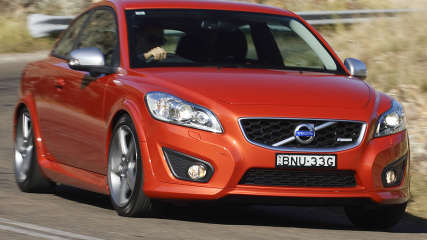Volvo C30 Electric 2011 review
By Karla Pincott · 17 Oct 2011
If this is the future of electric cars, we'd have one. And it is. But we can't. Or at least, not in the exact form of the Volvo C30 Electric we've just tested.This is part of a fleet of 50 prototypes that will increase to 250 by the end of next year for evaluation around the world. Only two will come to Australia, and neither of them is likely to end up at Chez Carsguide, with the Swedish company targeting business and government fleet leases.But the car won't ever go into full-scale production, which is a pity because it seems to offer everything you could want as a green drive. The good news is that the evaluation program will feel into an electric version of the new V40 model - based on an extended C30 platform -- that is going to replace the aging S40 and V50.And by what we can judge from the camouflaged spy shots of that car, it could be just as good a plug-in prospect as the C30.VALUEIt's almost impossible to talk about value with a car that's not for sale. But it's worth considering where the V40 Electric might be positioned. The initial prices for new technology are high, but manufacturers know early adopters will often wear the extra slug.Prices will come down by the time the Volvo hits the market, but you could still expect to pay at least $50,000 in today's terms. The Mitsubishi i-Miev plug-in is $10,000 more, smaller and not pretty. The Nissan LeafTECHNOLOGYCharge is stored in a 24kW bank of lithium-ion batteries that power a 82kW/220Nm electric motor. With the 200Nm of torque being fully-delivered right from the start, Volvo says the C30E does a 0-100km/h time of 10.5 seconds.It gets to a top speed of 130km/h, with range limited to 120-150km, and a full recharge taking 7.5 hours from a household socket. Zero fuel means zero emissions, except perhaps a whiff of non-harmful exhaust from the bioethanol system that looks after the heating system - reserving the battery power for driving unless manually switched over.SAFETYThe cars will have all the Volvo safety features, with active and passive safety systems, crash avoidance technology, pre-crash warnings and post-crash protection. But there's long been concern about what happens in a crash if you've got a massive lump - or two - of battery loose in the car. So Volvo has also been working to make sure it stays where it's supposed to.Body structures are being strengthened, the pack is positioned so it won't collide with the fuel tank, and a venting system released battery gases outside the car, not into the cabin.DESIGNThe C30 end of the Volvo line-up is the logical place to start for electrification, because it's the lightest car they have. The bonus is that the fast rear line of the hatchback looks up-to-date and stylish, and that will fit better with those who want a plug-in that looks modern without resembling a space pod or attention-seeking supercar.Apart from the socket for the charging cable, from the outside it looks just like any other C30 -- until you lift the bonnet and see an electric motor instead of an engine. The two battery packs are mounted down the centre and in the (former) fuel tank area under the rear, keeping the 280kg battery weight centred, low and trailing - which avoids a weighty nose that would undermine handling.A simple, clear graphic in the instrument cluster shows the battery state and drain rate - without the need for complicated animations and little growing trees favoured in other green cars. There is a teeth-grittingly cutesy touch with a turtle icon that lights up when engine power is reduced, but apart from that it's all admirably sensible.The test car was accented with gunmetal green exterior touches to signify its role in the electric team. The signature livery was echoed in the cabin with bezels and the translucent tone of the shifter - itself a tiny streamlined sculpture that (like the Volvo floating centre console) looks like it might have been swiped from Bang and Olufsen.DRIVINGWith all the torque on tap right from the start, the C30E is snappy off the line, and keeps it coming constantly for most of the acceleration, tailing off only as you get into highway speeds. Lifting off the accelerator gives a noticeable effect of 'engine braking' but in this case it's the system harvesting energy to recharge the battery pack. The shifter lets you select a 'sailing' mode that disconnects the motor and allows the car to coast, but you can really only bring this into play at highway speeds.The positioning of the battery packs keeps the weight low, central and towards the rear, and that comes into play in the cornering. The car feels balanced and reasonably agile. You can hear the electric motor, and while it probably won't appeal to fans of the big-displacement soundtracks, there's a certain exhilaration in the rising sci-fi whine. It's definitely futuristic and prospectively fun. Beam us up, Scotty.VERDICTIt's practical, doesn't look boring - or dorky - and isn't a boring drive. If all that applies when the V40 version comes onto the market, with the right price this will be a winner.Volvo C30 ElectricPrice: NADrivetrain: 82kW/220Nm electric motor, 24kW lithium-ion battery packTransmission: CVT, FWDBody: 4-door, seats 5Safety: five-star (est): 6 airbags, ABS, EBD, BA and moreThirst: 0L/100km; 0g/km CO2Range: 120-150kmRecharge: 7.5 hours (!0 amp)"We'd like it. We can't have it"








